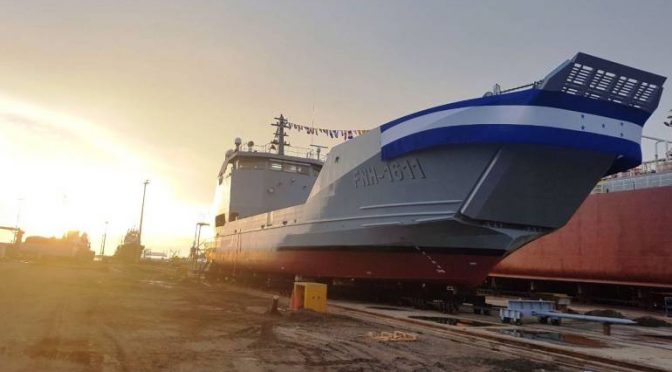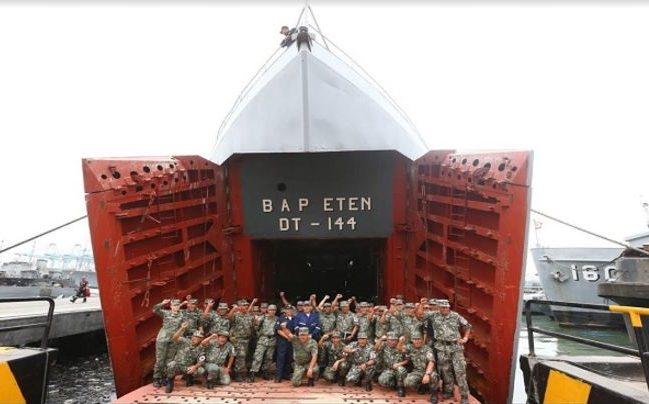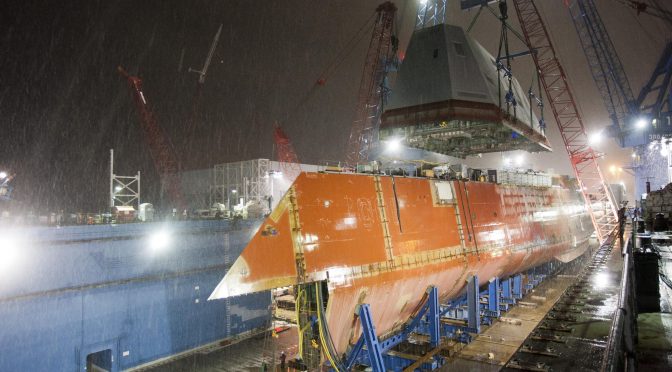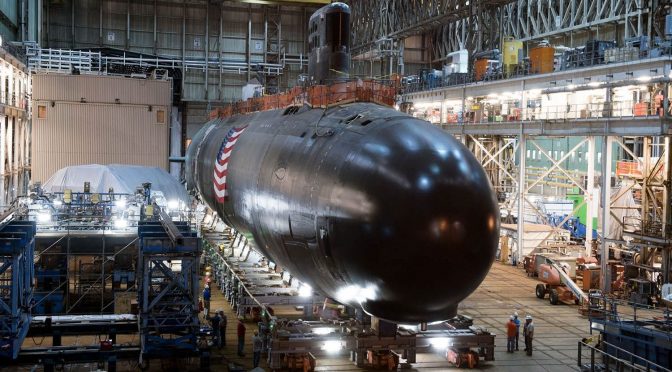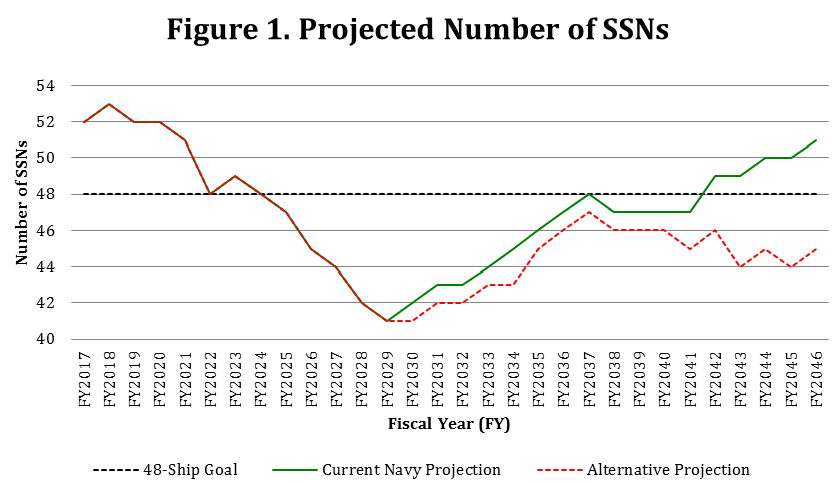By Steven Wills
Introduction
There has been much gnashing of teeth and complaint in response to the U.S. Navy’s slow build toward a goal of 355 ships. Peacetime naval buildups by free societies have never been simple undertakings. Such governments usually retire large numbers of warships in search of “peace dividends,” from which recovery is often a challenge. If ill-timed, they can result in large numbers of warships that are out of date before they complete even a decade of service, or need to be retired before the end of the service lives to cut costs. Getting to the right numbers of ships, especially in a period of tight finance may mean holding onto old ships well past their expected service life. Past examples of peacetime buildups by the British Royal Navy and U.S. Navy suggest that while getting to larger numbers of ships is possible, the costs can be prohibitive; especially in an environment of rapid, technological advancement.
British Royal Navy Buildups
Representative governments have always been quick to reduce expensive naval armaments in peacetime. The British Royal Navy (RN) reduced its force structure in only modest terms in the wake of the victorious French and Indian War. End strength of the RN dropped from 365 commissioned warships of all types in 1763 at the conclusion of those hostilities to 270 vessels at the start of the American Revolution in 1775.1 While still formidable, British lawmakers questioned whether this force that still boasted over 130 “ships of the line” of 50 guns and greater was capable of dealing with the American rebellion. A debate in the House of Commons from 13 February 1775 featured one speaker who stated “Our present naval force was by no means adequate to our professed intentions; for the squadron that we designed for America would answer no purpose of stopping their commerce; or if we did send a sufficient one, our own coasts, comparatively speaking, must be left totally defenseless.”2 The speaker went on to state that Britain’s perpetual enemy France might dispatch 75 or more ships of the line to menace English seacoast communities if the bulk of the available RN went to the Americas to reduce colonial commerce.
The British increased their fleet to 478 warships by 1783, but at great cost with some estimates suggesting an increase from a low of £1,526,357 in 1765 to £8,063,206 in 1782, and where public net debt rose to over 150 percent of GDP. Peacetime naval buildups are not new, and are almost costly affairs. Britain was perhaps lucky in that the increase in the size and capability of the RN in response to the American Revolution served to also prepare it for a renewed period of war with France. The creation of a state bank (The Bank of England) in 1694, and growing public confidence in the solvency of the British Crown allowed Parliament to “Raise immense sums on short notice and at relatively low rates of interest.”3 Unlike its Continental rivals the British also did not have to spend large sums on ground forces to defend vulnerable land borders. This combination of factors allowed for a fairly quick transition from “rusty trident” in the early 1770s to the sharp instrument that soundly defeated the navies of Denmark, Spain, and France during the Napoleonic wars.
A lack of such an immediate conflict can serve to create whole generations of warships that are out of date before they ever fire a shot in anger. The Royal Navy again reached such a low point in the late 1880s as it struggled to deal with a resurgent France and a rising Russian naval threat that imperiled both the British isles and multiple, overseas British possessions such as the imperial “crown jewel” of India. The Industrial Revolution was also in full swing with new grades of steel armor and improved steam engines entering service as often as new smart devices and software builds do today. British warship construction in the previous two decades had been slow to keep up with technical advances and many newspapers suggested the Navy was in poor condition to take on France and Russia. A series of articles in September 1884 in the Pall Mall Gazette by the muckraking journalist W.T. Steed described the Royal Navy as unready for war against Russia and France based on shrinking budgets, a lack of protection for Britain’s global naval logistics hubs, and an antiquated fleet of small craft for the defense of the British Isles.4
The British response to these conditions was the Naval Defence Act of 1889; a £21,500,000, 5-year program designed to produce 10 battleships, 42 cruisers, and 18 torpedo gunboats.5 According to naval historian Jon Tetsuro Sumida, the program was a resounding success in terms of finance and construction in that most of the program was completed on schedule with little cost overrun. The 1889 program also marked the beginning of an official “two power standard,” where Britain officially declared that its sum of first class fighting vessels (namely battleships) would be superior to the combined fleets of the next two naval powers (France and Russia). While a firm declaration of the importance of British seapower, it was at best a political measure rather than an accurate estimation of British naval strength. Naval historian Nicholas Lambert asserts that many uniformed senior Royal Navy officers believed the two-power standard was not enough and that it best represented a minimum level of strength.6 Britain’s primary political parties in the late 19th century (Conservative and Liberal parties,) however accepted the two power standard as a benchmark.
This decision would have significant consequences in the following decade as Britain’s burgeoning economic growth slowed and with it the funding for a larger fleet. Political scientist Aaron Friedberg asserted that British naval spending in the 1890s was made by possible by three factors. A general increase in national prosperity and with it consumer spending, especially on tea, tobacco, and beer, provided additional tax revenue. The British income and estate (death) taxes also provided generous sources of spending for both defense and for a rising tide of British social spending.7 Unfortunately, British economic growth slowed dramatically over the last quarter of the 19th century as the economic output of Germany and the United States dramatically increased.8 This process of British relative decline served to offset its naval superiority as the cost of replacement battleships dramatically increased over the same period. The pioneering battleship (then known as an ironclad) HMS Devastation cost £360,000 in 1869, but by 1898 the battleship HMS Implacable was £1,100,000.9 These increasing costs would make replacement of the existing foundation of British naval supremacy a significant challenge.
To this financial setback was added the rising costs of new technology; first in the form of new armor, weapons, and steam-powered equipment, but later by the introduction of asymmetric warfare systems such as the side armored cruiser. This ship, with long range, medium-sized weapons and armor sufficient to withstand the shells of the British cruisers traditionally assigned to defend imperial trade routes, represented a direct threat to British finance from trade and key sea lines of communication to overseas possessions like India.10 The French Navy also financed submarine and torpedo development as additional countermeasures to traditional British maritime superiority.11 The very expensive ships of the Naval Defence Act of 1889 were, by contrast, too slow and short-ranged to overtake and destroy armored cruisers, despite being better armed. They were also poorly protected against the torpedo as employed by the submarine and the surface torpedo boat. Improvements in armor manufacture, especially the Krupp steel process that resulted in much lighter yet stronger protective plates, enabled much more armor to be used over a wider area of even cruiser-sized ships. This gave the armored cruiser class its edge over earlier ships that could not support side armor. The new armor was less expensive than past versions, but that improvement was lost in the rush of other expensive steam propulsion and gun systems that combined to double the cost of a modern battleship over the period from 1895 to 1905.12 In fact, technological advancements ensured that the ships from the Naval Defence Act of 1889, notably the eight Royal Sovereign class battleships that were state of the art in 18991, had at best 15 year effective service lives before being out of date.13

Finally, the international situation and unexpected war in South Africa added to the financial problems of relative decline and rapid technological advancement. The Second Anglo Boer War of 1899 to 1902 put further strain on British finance and with it plans to renew naval supremacy. While early estimates by the British government suggested that costs for the South African conflict might be maintained below £21 million, army-related spending rose quickly in the first two years of the conflict from £21 million to £44.1 million and, and overall British government spending finally grew to a figure of £205 million during the last two years of the war.14 The British national debt also rose from £14 million in 1899-1900, and later to £53 million in 1901 and 1902.15 It was inevitable that these figures would affect Royal Navy expenditures. Over roughly this same period (1897 to 1904,) the Royal Navy expended £29.6 million on new battleships and £26.9 million pounds for the new armored cruisers. Such expenditures could not be sustained without a major increase in taxes which neither British political party would countenance. By 1902 it was clear to the British political establishment that some economy was desperately required and the new Prime Minister Arthur Balfour created the Committee of Imperial Defence to seek joint (Army/Navy) solutions to Britain’s global defense posture. The First Lord of the Admiralty (roughly the equivalent of the U.S. Secretary of the Navy,) Lord Selborne advised his flag officers to “Cease to say ‘this is the ideal plan and how do we get enough money to carry it out,’ to ‘Here is a sovereign (UK coin,) how much can we squeeze out of it that will really count for victory in a naval war?’”16
Ultimately, despite significant expenditure, the Naval Defence Act of 1889 failed to deter continued naval expansion of France and Russia, and also later Germany, Japan, and the United States.17 Rapid technological advancement quickly made the fleet of the 1890s obsolete in the next decade. Britain’s own relative decline and the expenditures for the Boer War further weakened the Royal Navy’s efforts to keep pace with advancing technology and the rising fleets of other nations. The end result was the ascent of the eponymous Admiral Sir John Fisher and his radical program of what today would be called “transformation” where the battlecruiser would replace the battleship and the armored cruiser for high seas combat, and littoral combatants such as destroyers and submarines would be responsible for the United Kingdom’s homeland defense. The Fisher regime, while innovative and fiscally responsible, is seen by some as the beginning of the end of British naval supremacy as Fisher’s program required major reductions in presence forces scattered around the empire in favor of the combat-capable force to defeat rising European competitors. This reduction in direct imperial influence and dependence on other powers, notably the United States and Japan to secure British interests in North America and the Western Pacific, was seen as perhaps the beginning of the end of the British Empire and with it the need for an expanded Royal Navy in its defense.18 This decline might be traced back to the Naval Defence Act of 1889 and a desire to build a significant peacetime fleet in specific numbers over those of opponents.
U.S. Naval Buildup Challenges
The final example of difficult peacetime buildup also deals with the political calculus of fleet size. The U.S. Navy’s 600 ship fleet goal of the 1980s had its origins, like that of the Royal Navy of the 1880s and 1890s, in an enemy’s (Soviet) increased fleet size, rising welfare state expenditures, and a distant land conflict (Vietnam) sapping of funds that might have been used for modernization. The United States Navy of 1970 was a Vietnam War-focused fleet in dire need of recapitalization and modernization. The incoming Chief of Naval Operations (CNO) Admiral Elmo Zumwalt, Jr. set out to begin those processes, but at the cost of the retirement of significant numbers of ships; most of World War II vintage and diminished capability. The fleet had already undergone significant reductions during the tenure of Admiral Thomas Moorer as CNO, with the overall number of ships dropping from 932 to 731.19 Zumwalt had to impose further reductions in order to gather enough resources and potential crews for new construction. He later said:
“We were, on the average, technologically obsolescent. Our fleet was over 20 years of age, on the average. One of the things that impressed both Secretary Chafee and Secretary Laird in my preliminary meetings with them when, as it turns out, they were looking for who should be the next CNO, was that I said that given the budget limitations, we simply had to reduce the numbers of ships in order to begin the process of building new ships. We needed to reduce the expenditures for men and ships and start building ships.”20
Like Fisher in 1904, Zumwalt also needed to cut obsolescent ships before building new ones. While such processes delay growth and in fact result in reductions, they are necessary for subsequent fleet growth. Zumwalt worked hard to ensure existing, authorized classes like the Spruance-class destroyers were built and pushed to get what became the Oliver Hazard Perry-class frigates added to the fleet, but mass retirements of old ships further reduced the fleet size.21 Overall numbers of ships decreased to 530 by 1980.22
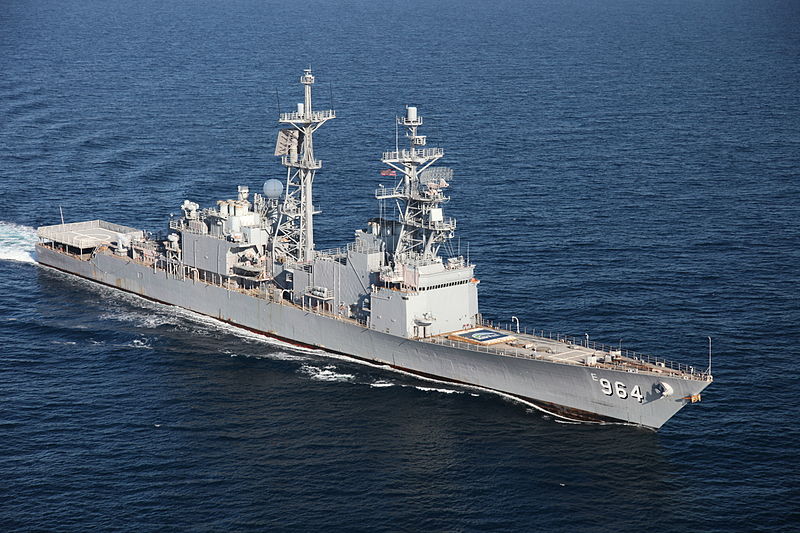
The Presidency of Jimmy Carter was an especially dark period for the Navy with the former naval officer president content with an objective force of only 400 ships.23 Carter and his land warfare-focused subordinates such as Defense Secretary Harold Brown and Deputy Secretary of Defense for Policy Bob Komer sought significant reductions in naval expenditures through most of his administration.24
Studies for rebuilding U.S. Navy force structure began during the Ford Presidency and gained maturation during the Carter administration thanks to the efforts of Carter’s own Navy Secretary Graham Claytor, a World War II naval officer who opposed the Defense Department’s naval reductions. Claytor sponsored a study known as SeaPlan 2000 that recommended a 585 ship fleet that could be purchased and maintained with regular, four percent growth in the Navy’s budget; a figure then within accepted spending limits of the Navy.25 Like the British “Two Power Standard,” this figure was also a political measurement in that multiple studies on 400, 600, 900 and 1200 ship fleets had been undertaken with the 600 ship version seen as most economical and that it represented a minimum rather than an ideal force structure to meet the global Soviet naval threat.26
Jimmy Carter was defeated by Ronald Reagan in 1980 and the new administration both adopted and altered elements of SeaPlan 2000. Led by Navy Secretary John F. Lehman Jr, a new 600-ship Navy (an easy round-up from 585) figure was introduced as the benchmark for U.S. Fleet strength. An aggressive building program was introduced to meet the 600 ship figure by the close of a hypothetical 2-term Reagan presidency. The 600 ship Navy was paired with a new Maritime Strategy that justified and detailed the fleet’s use in combat with the Soviet Navy as well as routine presence and other operations. Navy Secretary Lehman also stated that 600 ships was the minimum fleet size to support the 15 carrier battle groups needed to provide the geographic, peacetime naval presence.27 The whole package of fleet size, strategy, and employment was offered at the same four percent rate of growth.
The weak point of the 600-ship navy buildup, however, was its retention of older, steam-powered surface warships in significant numbers in order to bridge the gap between existing and future force structure while maintaining the 600 ship number goal. The navy of the period had ships propelled by steam, diesel, nuclear, and most recently gas turbine engines. Of these types, nuclear power supported a growing portion of the Navy’s carrier strength and a dozen guided missile cruisers built as carrier escorts. Diesel engines were auxiliaries on many ships and propelled a growing number of mid-sized amphibious warfare ships. Gas turbine engines had become the new choice of propulsion for combatant ships including the Spruance-class destroyers, Ticonderoga-class cruisers, and Oliver Hazard Perry-class frigates. Steam power, however, still served the bulk of the existing surface combatant fleet, some of the aircraft carriers, and large number of auxiliary ships. Many of these ships were older units and they were not aging well; a condition that made their retention as part of the growing 600-ship force a challenge.
In terms of one warship category, guided missile destroyers (DDG,) the Congressional Budget Office (CBO) estimated in 1985 that only five of 67 such ships in 1989 would be classed as “modern,” which the CBO defined as constructed after 1970.28 The most numerous frigate/guided missile frigate (FF and FFG) category was better, but still saw 65 of a possible 111 ships as pre-1970 construction in 1989.29 The vast bulk of these older units were steam-powered units, whose manpower and maintenance-intensive 1200 psi, 950 degree steam plants became more challenging to maintain as they aged. Numerous oil leaks and fires plagued these aging units over the course of the late 1970s and 1980s. While the steam cruisers received significant combat systems upgrades in the form of the New Threat Upgrade (NTU) system, only a few of the steam destroyers received such improvements and the steam-powered frigate classes remained largely unaltered with the exception of the addition of the close in weapon system (CIWS) for some.
The modernization and retention of the steam-powered surface combatant force, and many other steam powered navy warships became a moot point at the end of the Cold War in 1991. As early as 1989 when it became evident that the Soviet Union was in a period of decline, 16 frigates of the Garcia and Brooke class frigates and guided missile frigates were decommissioned as a cost-savings measure.30 The manpower cuts determined by Chairman of the Joint Chiefs of Staff General Colin Powell in the creation of the post-Cold War “Base Force” further accelerated the retirement of the personnel-heavy steam warship fleet. The 34 units of the Adams and Farragut-class destroyers followed into retirement in 1990 and 1991, and the upgraded steam cruisers of the Leahy and Belknap followed in the early 1990s.31 The numerous Knox-class frigates were also decommissioned by the mid 1990s, with an abortive attempt to retain some as reserve frigates ended in 1994.
In all, 114 steam-powered cruisers, destroyers, frigates were retired in the period 1989-1995. It is open to debate how long these ships could have been retained had the Cold War continued, but given their age and maximum thirty year service life, it is improbable that enough could have remained in commissioned long enough to be steadily replaced by newly constructed Arleigh Burke-class destroyers in the 1990s and 2000s.32
Conclusion
Peacetime naval buildups are difficult and face uncertain sustainability if the force structures they create are not soon called to active combat. Like the British in 1889 and the U.S. in the 1980s, the U.S. Navy is attempting a significant peacetime naval buildup without an immediate conflict on the horizon (unlike the U.S. “Two Ocean Navy” buildup of 1938 to 1940 when World War 2 was already underway.) Like the Royal Navy of the middle and late 18th century, it now finds that even modest reductions can inhibit low-end presence and limited war operations. The U.S. Navy may also discover that rapid technological advances in data processing, artificial intelligence, hypersonic and directed energy weapons can render much of any fleet additions obsolete less than 10-15 years into a 30-40 year life span. Open architecture systems and the modular weight, space, and connectivity of the unfairly maligned littoral combat ship (LCS) might allow that ship type to deploy capabilities yet unplanned or conceived when they were constructed. Such ships can also be constructed in larger numbers than their larger, much more technically complex cousins. It may still be difficult to maintain a fleet of any relevant size given these challenges.
The U.S. Navy has however taken some positive steps to increase fleet size and simplify the process of maintaining that fleet longer and at best cost. The Cold War-era classification of surface warships (cruiser, destroyer, frigate, patrol,) is giving way to one of large and small surface combatant (LSC and SSC.)33 Historically, a reduction in the number of individual classes by merger has been a good way to reduce costs. The British Royal Navy combined the predreadnought battleship and fast armored cruiser into first the battle cruiser and then the fast battleship. The introduction of open architecture combat systems and vertical launch capability for weapons has made the process of updating much easier than in the past. The Navy has requested that the new FFG(X) class have as much commonality with current ships as possible.34 More reductions in the acquisition and test and evaluation bureaucracy can help this process as well. The LCS, for example, must undergo another round of operational testing every time one of its mission modules gets a new piece of equipment. This sort of endless testing only delays programs and results in cost increases as do the additional layers of “oversight” added to an already over-burdened Navy.
Peacetime naval buildups in periods when war is not imminent are historically difficult, and no one should expect immediate results in the absence of large budget deficits. As history shows, sometimes a reduction in overall numbers of ships is required in order to build new construction necessary to grow the fleet. Solutions for managing such efforts include not reducing the fleet to a point where even a modest increase is difficult; avoiding the pitfalls of rapidly advancing technology that can make today’s force structure rapidly out of date, combining classes of ships into fewer types of ships with more commonality, and avoiding politically-driven fleet sizes that cannot be retained without herculean efforts. The U.S. Navy can increase in size and capability, but it won’t happen overnight in what remains a peacetime environment.
Steve Wills is a retired surface warfare officer and a PhD candidate in military history at Ohio University. His focus areas are modern U.S. naval and military reorganization efforts and British naval strategy and policy from 1889-1941. These views are his own.
References
1. Jack Coggins, Ships and Seaman of the American Revolution, Harrisburg, PA, Promontory Press, 1969, p. 22.
2. Ibid, p. 19.
N.A.M Rodger, Command of the Sea, A Naval History of Britain, 1649-1845, New York, Norton, 2004, p. 644.
3. Jon Tetsuro Sumida, In Defence of Naval Supremacy, Finance, Technology, and British Naval Policy, 1889-1914, Annpolis, Md; The Naval Institute Press, 1993, p. 5.
4. W.T. Steed, “The Responsibility for the Navy,” The Pall Mall Gazette, 30 September, 1884, electronic resource, https://attackingthedevil.co.uk/pmg/responsibility.php, last accessed, 01 March 2018.
5. Sumida, p. 13.
6. Nicholas Lambert, Sir John Fisher’s Naval Revolution, Columbia, SC, The University of South Carolina Press, 1999, pp. 20, 21.
7. Aaron Friedberg, The Weary Titan, Britain and the Experience of Relative Decline, 1895-1905, Princeton , NJ, Princeton University Press, 1988, p. 98.
8. Ibid, p. 81.
9. David K. Brown, Warrior to Dreadnought, Warship Design and Development 1860-1905, Barnsley, UK; Seaforth Publishing, 2010, p. 203.
10. Lambert, p. 25.
11. Ibid, p. 27.
12. Sumida, pp. 19, 20.
13. Lambert, p. 105.
14. Friedberg, p. 106.
15. Ibid.
16. Lambert, p. 36.
17. Friedberg, p. 153.
18. Ibid, pp. 201-205.
19. “U.S. Ship Force Levels; 1886-Present,” Washington D.C.: The U.S. Navy History and Heritage Command, electronic resource, https://www.history.navy.mil/research/histories/ship-histories/us-ship-force-levels.html#1965, last accessed 10 April 2018.
20. Alfred Goldberg and Maurice Matloff, “Oral History Interview with Admiral Elmo R. Zumwalt Jr,” Washington D.C,; The Defense Department Historical Office, 22 October, 1991, pp 11, 12.
21. Ibid, p. 16.
22. John Hattendorf, U.S. Navy Strategy in the 1970’s, Selected Documents, Newport, RI, The United States Naval War College Press, 2007, p. xiii.
23. John Hattendorf, The Evolution of the Maritime Strategy, 1977-1986,Newport, R.I.; The U.S. Naval War College Press, 2003, p. 9.
24. Edward C. Keefer, Harold Brown, Offsetting the Soviet Military Challenge 1977-1981, Washington D.C.; The Office of the Secretary of Defense Historical Office, 2017, pp. 233-239, 425.
25. John Hattendorf, U.S. Navy Strategy in the 1970’s, Selected Documents, Newport, RI, The United States Naval War College Press, 200, p. 121.
26. John Hattendorf, The Evolution of the Maritime Strategy, 1977-1986,Newport, R.I.; The U.S. Naval War College Press, 2003, pp. 10-13.
27. Ibid, p. 50.
28. “Future Budget Requirements for the 600 Ship Navy,” Washington DC, The Congressional Budget Office (CBO,) September 1985, p. 15.
29. Ibid, p. 16.
30. “Navy to Place 6 Frigates Based in S.D. in Mothballs,” The Los Angeles Times, 24 June 1988.
31. Kit and Carolyn Bonner, Warship Boneyards, Osceola, WI; MBI Publishing, 2001, pp. 115, 116.
32. “Future Budget Requirements for the 600 Ship Navy,” p. 56.
33. Ron O’Rourke, Navy Force Structure and Shipbuilding Plans; Background and issues for Congress, Washington D.C.; The Congressional Research Service (CRS,) 08 December 2017, p. 3.
34. Ron O’Rouke, “Navy Frigate (FFG[X]) Program: Background and Issues for Congress,“ Washington D.C.; The Congressional Research Service (CRS,) 08 December 2017, p. 4.
Featured Image: CVN 76 under construction (Wikimedia Commons)


